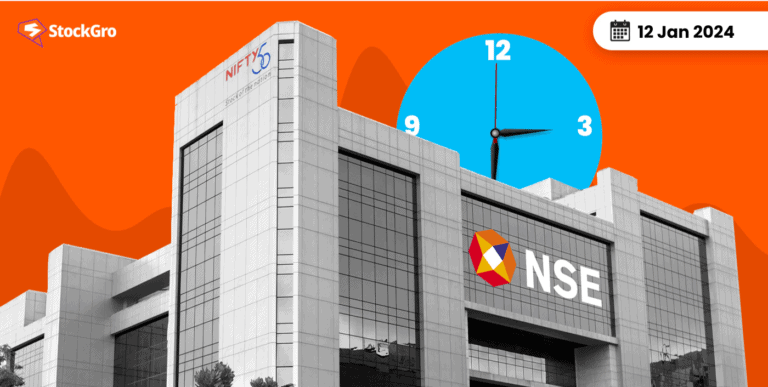
Over its 30 years in business, SpiceJet has gone from being a successful low-cost airline to being on the verge of bankruptcy to being profitable again. With over fifty Boeing 737 and DHC 8-Q400 aircraft, SpiceJet is now the second-largest airline in India based on the number of domestic passengers it carries.
The airline’s stock has increased by 80% during the last three months. On January 10, one day ahead of the company’s annual general meeting, SpiceJet’s shares shot up 5% in early trading.
SpiceJet share price was ₹63.99 on the National Stock Exchange at 9:34 a.m. on Wednesday, January 10.
The reason behind it? We will find out in this article. Stay tuned!
Also read: Looking into India’s aviation industry: A sky full of possibilities
SpiceJet news update: SpiceJet share surges before AGM review
SpiceJet’s share price jumped over 5% in Wednesday’s early trading session, aligning with the company’s annual general meeting (AGM), which is being held to approve financing. The low-cost airline has drawn the attention of several investors, including some well-known figures.
The aircraft finance division of the large private equity firm Carlyle Group, Carlyle Aviation Partners, reportedly met with SpiceJet’s Chief Managing Director Ajay Singh lately, as per media reports quoting sources. The report additionally stated that they spoke about plans and initiatives for SpiceJet and SpiceXpress.
In addition, the airline presented its plans for SpiceJet 3.0, which calls for the restoration of 25 grounded aircraft to service. According to reports, 64 organisations have shown interest in investing in the low-cost airline due to the company’s bold ambitions for revitalisation.
In an attempt to strengthen its position even further, SpiceJet is currently attempting to purchase GoFirst, a bankrupt competitor backed by Wadia Group. This action is in line with SpiceJet’s long-term strategy to merge with another company to achieve a 25% market share.
After being forced to appear before the NCLT (National Company Law Tribunal) by many lessors for unpaid debt, SpiceJet declared its intention to issue equity shares to banks, FIIs, HNIs, and private investors to fund an additional ₹2,250 crore. After approving plans for raising money, the corporate board was now asking shareholders for their consent.
SpiceJet’s stock has increased by over 190% since May 23, 2023, when it hit a 52-week low of 22.65. In almost the last six months, the stock has increased by almost 115%, and over the past three months, it has increased by 83%.
SpiceJet decides to start flying to Lakshadweep
The airline also intends to make use of the funds to add additional locations to its network, such as Ayodhya and Lakshadweep.
SpiceJet is the only airline authorised by the RCS (Regional Connectivity Scheme) to operate flights to Lakshadweep and will be the one starting to operate there soon. During the AGM on Wednesday, Ajay Singh, the CMD of SpiceJet, made this statement.
Under the regional connectivity programme, Udey Desh ka Aam Nagarik (UDAN) would run two flights to Lakshadweep.
Also read: HDFC Bank Q3 results: A quarter of growth for HDFC in 2023/
SpiceJet competitors
The top three competitors of SpiceJet based on market capitalisation are
- Interglobe Aviation (117,790.46 ₹ cr.)
- Jet Airways (655.46 ₹ cr.)
- Global Vectra Helicorp (190.96 ₹ cr.)
History of SpiceJet
Although the SpiceJet brand was established in 2004, its air operator’s certificate (AOC) was secured in 1993. In 2004, after Ajay Singh acquired the corporation, the airline intended to relaunch as SpiceJet using a low-cost business strategy.
In 2005, SpiceJet leased two Boeing 737-800 aircraft and intended to acquire ten additional aircraft to support its growth. In late May 2005, SpiceJet launched its inaugural flight with a leased Boeing 737-800 from New Delhi to Mumbai.
At the end of 2008, it had captured a third of the Indian low-cost carrier market, behind IndiGo and Air Deccan.
In July 2010, the airline placed a purchase order for 30 Boeing 737-8 aircraft, valued at US$2.7 billion, and in December of that year, it placed another order for 15 Bombardier Q4 Dash short-haul aircraft, valued at US$446 million.
In 2012, the rise in petroleum prices worldwide caused SpiceJet to lose more than ₹39 crore. SpiceJet was on the verge of declaring bankruptcy in 2014.
However, with Ajay Singh on board, SpiceJet’s comeback was well underway by 2015. Ajay Singh acquired ownership of the Sun Group when the company sold all of its shares in January 2015. The airline secured a deal for 25 Q400 turboprop aircraft in 2017. 2019 saw SpiceJet take over thirty Jet Airways-grounded aircraft.
SpiceJet jumped at the opportunity to expand its fleet without having to wait for the 737 MAX to become unprofitable, thanks to Jet Airways’ April 2019 bankruptcy. Additionally, if the airline needed more planes, it could purchase extra slots at Jet Airways’ main hubs in New Delhi and Mumbai, thanks to improvements in government regulations.
As a result, SpiceJet expanded its fleet by 42 aircraft between March 2019 and March 2020, the majority of which were ex-Jet Airways 737s. As it did in 2015, SpiceJet is reinventing itself in the post-pandemic environment. Its market share has dropped, but its financial performance has improved significantly.
Investing in SpiceJet
Pros
- With the ₹ 2,250 crore funding, SpiceJet might reduce its financial stress, resolve its challenges, and accelerate its expansion.
- SpiceJet 3.0 intends to restart 25 grounded aircraft, increase its network, and improve efficiency.
- SpiceJet wants to buy bankrupt competitor GoFirst to gain market share and competitive advantage.
- SpiceJet’s domestic slots and routes might help it rebound from the pandemic-induced slump.
Cons
- Two significant legal issues that SpiceJet is now handling might cause difficulties for the business.
- SpiceJet has tough competition from IndiGo, Air India, and Vistara, which perform better financially and operationally.
Also read: India’s stock market: A global leader with 25% growth in 2023/
Financials
| Metric | Value |
| Market cap (₹ Cr.) | 2,168.73 |
| Book value per share (₹) | -84.31 |
| ROCE | -171.83% |
| ROE | 0.00 |
| Face value (₹) | 10 |
Shareholding pattern of SpiceJet
The shareholding pattern (as of September 2023) of SpiceJet is as follows:
Promoters: 56.53%
Foreign Institutional Investors (FIIs): 0.29%
Domestic Institutional Investors (DIIs): 0.02%
Public: 43.15%
Conclusion
SpiceJet is attempting a bold turnaround, aiming to raise substantial funding to reduce debts and restart grounded capacity. If successful, the capital injection could help SpiceJet rework operations, expand strategically by acquiring a competitor, and tap growth via the UDAN scheme.
However, investors need to assess execution risks and financial viability amidst strong competitive intensity before assessing the carrier’s prospects.

